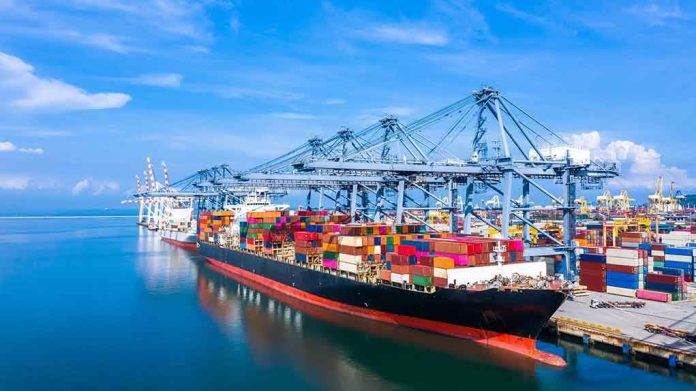
President Trump’s July 9 tariff deadline looms large, threatening to upend the global trade landscape and send shockwaves through American households and businesses—while the administration stands firm, daring the world to blink first.
At a Glance
- Trump’s administration set a 90-day freeze on sweeping new tariffs, expiring July 9, 2025.
- Formal warnings sent: if no deals, tariffs hit as early as August 1, 2025.
- Canada’s digital tax on U.S. tech firms sparks threats of direct, reciprocal tariffs.
- Economists warn of higher prices and renewed inflation if the tariff hammer falls.
Trump’s Deadline Diplomacy: Trade Brinkmanship Returns
The countdown is on, and President Trump’s second-term trade agenda is all about high-stakes gamesmanship. After declaring April 2 “Liberation Day” for U.S. trade policy and slapping threats of tariffs on friend and foe alike, Trump’s White House imposed a 90-day pause to let the world’s trade ministers scramble. That pause ends July 9. The message: sign a deal, or brace for tariffs that could send shockwaves through the world economy.
Trump’s America First doctrine is back with a vengeance, and this time, he’s not just targeting China. The European Union, Canada, the U.K., and Vietnam are all in the crosshairs. The trigger? Any policy—especially new “digital services taxes” on America’s tech giants—seen as targeting U.S. interests. Canada, never one to shy away from poking the bear, rolled out a 3% tax on U.S. tech companies, prompting the White House to threaten tariffs on everything from maple syrup to auto parts. The administration’s playbook is no secret: if you want access to the American consumer, you play by American rules, or you pay up.
Race Against the Clock: Allies and Adversaries Scramble
With the clock ticking, trade negotiators are burning the midnight oil. The U.S. has secured tentative agreements with China, the U.K., and Vietnam. But talks with Canada and the EU are at a standstill, with both sides digging in their heels. Trump’s team has already drafted formal warning letters to capitals around the globe: no agreement by deadline, tariffs hit as soon as August 1. The intention is clear—no more extensions, no more empty threats.
The White House is betting that trading partners, panicked by the looming threat of tariffs, will fold before the buzzer. But as anyone paying for groceries and gas knows, these games are not without domestic cost. Economists and industry groups warn that consumers—already battered by years of inflation and supply chain chaos—will bear the brunt through higher prices on everything from electronics to clothing. The irony is thick: years of “woke economics” and endless money printing gave us inflation, and now tariffs threaten to pour gasoline on the fire.
Winners, Losers, and the Real Cost of Trade War Tactics
For American families and businesses, the stakes couldn’t be higher. U.S. manufacturers needing foreign parts, farmers relying on export markets, and consumers who just want to stretch their paycheck—all stand to lose if this turns into another round of trade war. Small businesses, already squeezed by rising costs, face the prospect of being priced out of the market. The big tech firms—those “evil corporations” the left loves to bash—are suddenly the pawn in a high-stakes international chess match.
Yet, Trump’s supporters see this as a necessary correction. For decades, U.S. negotiators bent over backward, inking “free trade” deals that hollowed out the heartland. Now, with the executive branch wielding tariffs like a sledgehammer, the message is: America will not subsidize foreign industries, nor will it tolerate policies that punish American innovation. Critics—predictably the usual suspects in academia and the big-city press—warn that the administration’s brinkmanship risks lasting damage to America’s reputation and economic stability. But for millions of voters tired of being lectured by globalists, this is the sound of a president fighting for Main Street, not Brussels or Beijing.
What’s Next: All Eyes on July 9
The next few days will determine whether Trump’s hardball tactics win real concessions or trigger another round of economic pain. With formal warnings sent, the world’s trade ministers face a stark choice: make a deal or face the music. If recent history is any guide, brinkmanship has become the new normal in U.S. trade policy. But this time, with inflation already draining American wallets, the cost of a miscalculation is higher than ever.
One thing is certain: the Trump administration won’t blink. The only question is whether our trading partners will—or whether American families end up paying the price for a global game of chicken that Washington elites never seem to lose.





